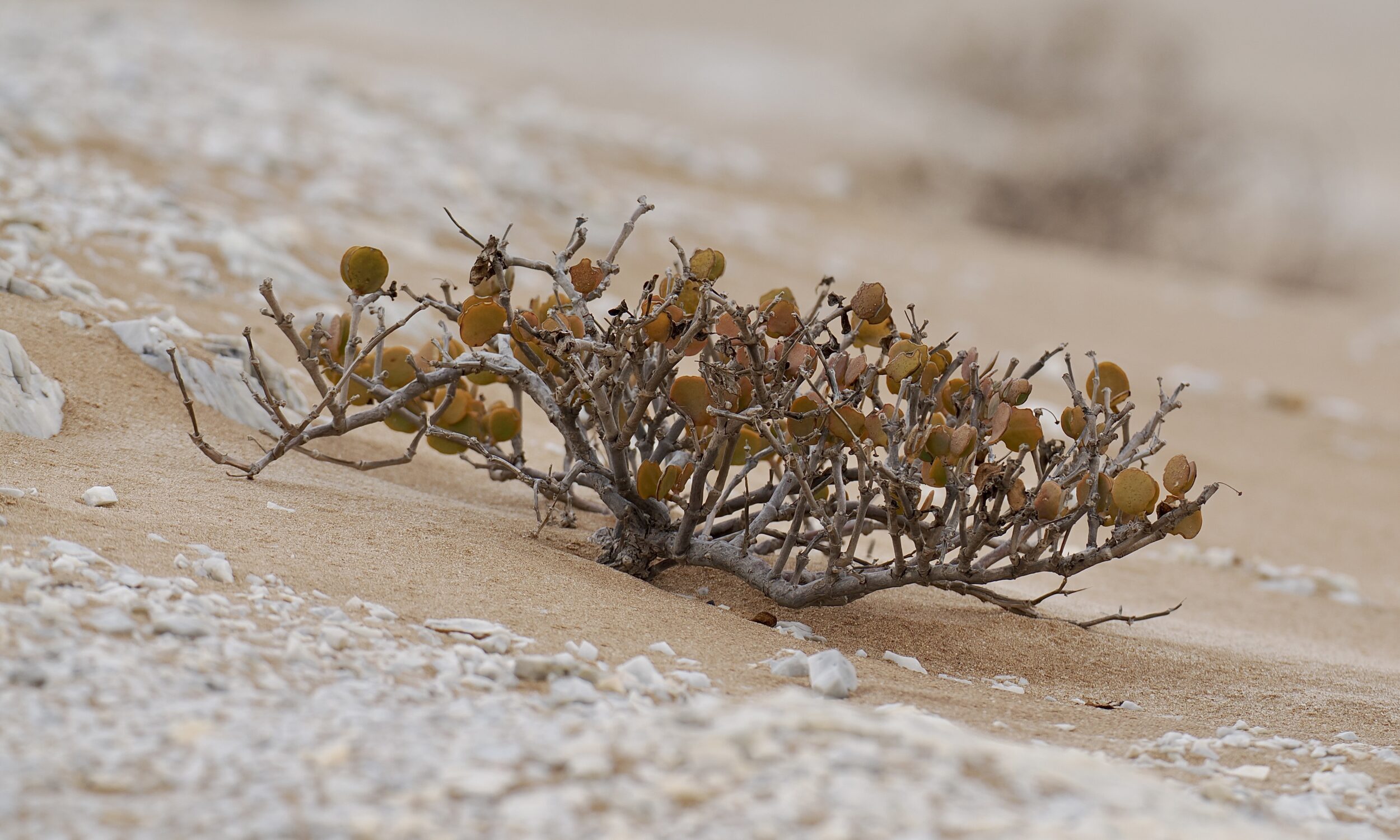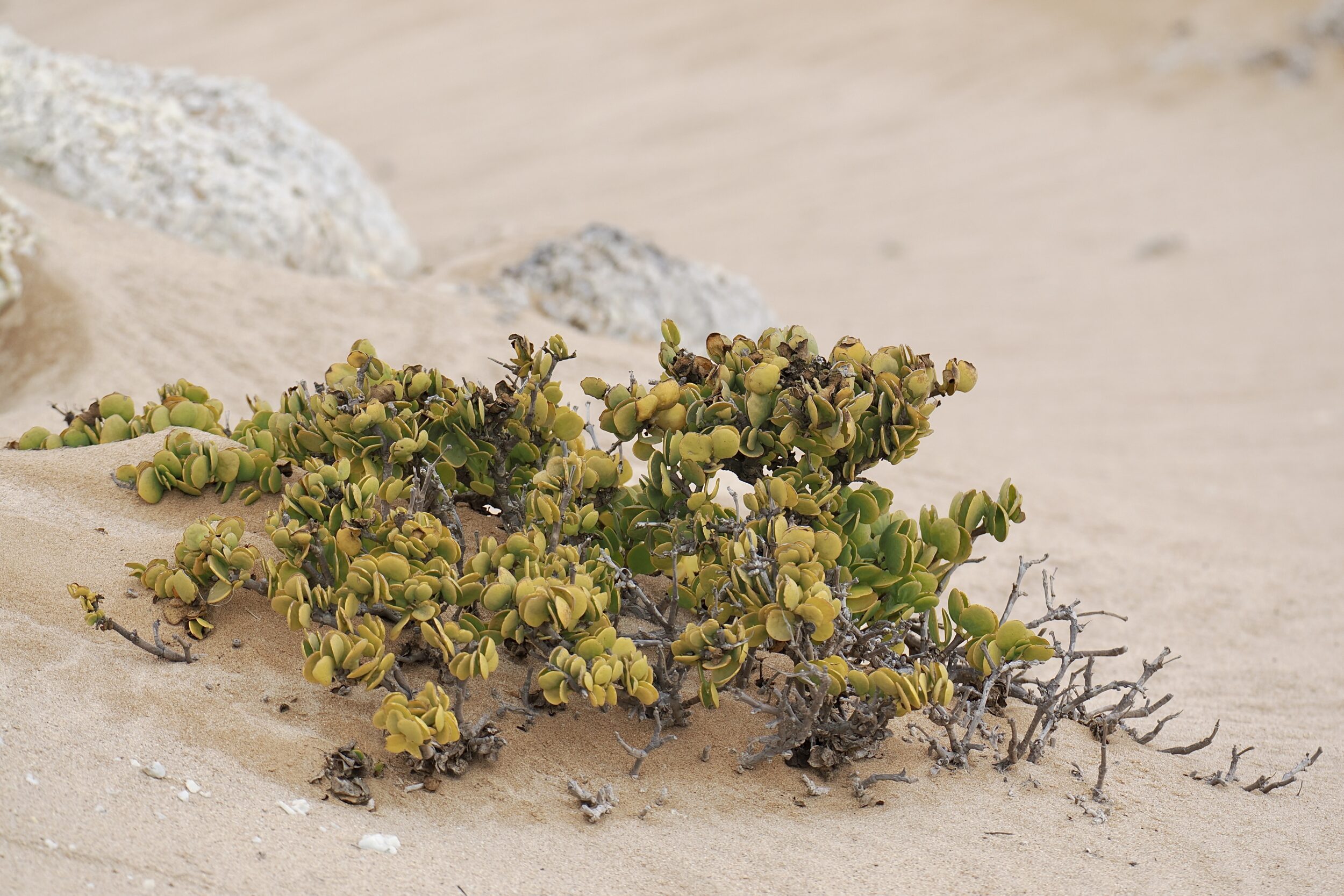The Namib’s plants are as astonishing as its animals.
We were just a few kilometres from the Atlantic Ocean, near Swakopmund, when I took this post’s photos, one November mid-afternoon.
Swakopmund’s “round figure” rainfall average for the month of November: 1 mm.
November is “infinitely” wetter than October!
Average October rainfall in Swakopmund: 0 mm.
Average total for the calendar year’s entire final quarter: 2 mm.
Q: how on earth can a very shallow-rooted, Namib-endemic shrub – one that often grows on the upper part of a dune – manage to survive? (and be a useful “emergency water source” for desert animals – parched humans included)
Relatively speaking, “being green” was an easier challenge for Kermit!
Above and below, you are looking at Dollar bushes, Zygophyllum stapffii.
Their nickname: Mickey Mouse bushes.
As you can see below, this succulent, semi-deciduous shrub is not always clad in green; in unfavourable conditions some or all of its round, paired leaves (gawwwrsh, Unca Mickey!) will “brown”, then drop off.
Still, in November 2022 most of the Dollar bushes we saw were sporting predominantly-green “dollars”.

There is a one-word answer to this post’s question…
Fog
In a sentence…
The ability to “harvest” moisture from the mists which so frequently roll in across the western part of the Namib Desert is the key to survival for more than a few Namib-endemic plants and animals.
Those mists’ existence is courtesy of the eastern Atlantic’s “cold” waters “kissing” the western edge of a “hot” continent.
I urge you to watch an excellent in situ explanation of how the Dollar bush works; the storage capacity of its “dollars”/ “Mickey Mouse ears” will surely amaze you, as will the behaviour of its germinating seeds:
